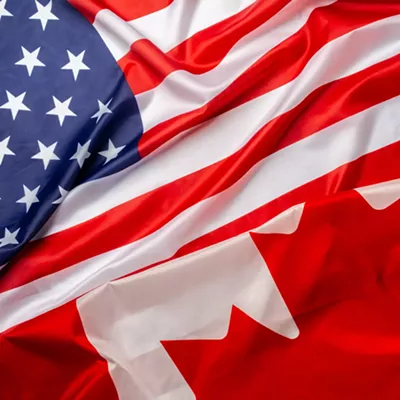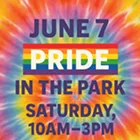A Global Opportunity
Three years ago, Spokane and Nishinomiya, Japan, celebrated the 40th anniversary of their Sister City relationship. The value of that relationship is difficult to measure in numbers alone. Above all, it provides a window of understanding between the peoples of Japan and the United States, and a continuance of fruitful, peaceful relations between those who had been enemies a mere 16 years prior to the Society's creation.
Notable benefits to Spokane directly attributable to the Spokane-Nishinomiya Sister City relationship include:
- Creation of the Manito Park Japanese Garden
- Establishment of the Mukogawa-Fort Wright Institute
- Establishment of the Japanese Cultural Center
- Japan Week, now in its 12th year
- Mutual professional exchanges: educational, artistic, civic and medical
- Student exchanges: from middle school through college
- More than 10,000 professional and student exchange visits in 42 years
- 35 Years of Nishinomiya Lilac Festival groups visiting Spokane.
This summer, from July 27-31, the City of Spokane and its Sister City organizations will be hosting the International Sister City Convention, attended by more than 1,200 delegates from some 60 countries. We need the current citizens of Spokane, whose fathers were the generation who brought us, against all odds and naysayers, Expo '74, to renew their commitment to the Sister Cities organizations of Spokane, and step forward to make our next appearance on the world stage as successful as Expo '74.
Our immediate challenge is the July 2005 International Sister City Convention. Spokane will be the smallest city ever to host this event, so let's show the world that Spokane's heart is larger than the sum of its population. Join a Sister City organization today and help us make the International Sister City Convention a success the world will remember. (Call 625-6639 for more information.)
Curtis Johnson
Spokane-Nishinomiya Sister City Society
Spokane, Wash.
A Debriefing on Beef
In response to Samuel Davidson's letter to the editor, "No Baloney" (1/20/05), I believe that it is appropriate to clarify and correct obvious errors and misinformation to the reading public. He is accurate in his description of BSE, or 'mad cow disease,' but that is where the accuracy of his statements ends.
BSE is found in the neuro tissue of an animal, specifically the brain, spinal cord and the retina of the eye. Transmission can only be accomplished through consumption of these items. The human equivalent of BSE is new variant Creutzfeldt-Jakob disease (nvCJD). The scientific community believes that this is the only form of this disease which has a transmission association to BSE.
Recent studies published in a British medical journal indicate that a human must consume a minimum of 3.3 pounds of infected brain, spinal or retina tissue to be at risk. To date, there have been a total of 153 cases of confirmed or probable nvCJD identified in 31 countries across the world. Not one case has been identified as affecting an American citizen. So ... when you look at a total population of these 31 countries of approximately 500 million people, your risk of contracting nvCJD is about 1 in 3.2 million -- and, if you live in the United States, zero!
Rather than create panic through misinformation and bias, let's put it into realistic perspective. You have a 1 in 1,214 risk of getting killed riding a motorcycle during your life; a 1 in 147,000 chance of dying from a dog attack; a 1 in 8,000 chance of suffocation in bed, and a 1 in 738,585 chance of dying because your pajamas catch on fire! Perhaps we should all lock ourselves in our homes, and sleep naked, but you would still have a 1 in 5,000 chance of falling off your bed and dying!
Oh, and by the way, I have always thought of feeding the people of the world -- including my own family -- as a "socially redeeming career."
Brad McDowell
Yakima, Wash.
Here's the Skinny
A study of 29,000 women by the Mayo Clinic College of Medicine, published in the current issue of the American Journal of Epidemiology, found that those with the highest intake of red meat and dairy products had a 40 percent higher risk of dying from heart disease than those with the lowest intake. The study accounted for other relevant factors like exercise, smoking, and body weight.
The study also found that women with the highest intake of vegetable proteins from beans, nuts, and tofu had a 30 percent lower risk of heart disease death than women with the lowest intake. These findings are consistent with earlier studies showing that animal protein promotes arterial plaque, whereas soy protein does not, and that vegetables have therapeutic effects.
The findings challenge the long-term safety of Atkins and other high-protein diets. These diets have been popularized by short-term drop in body weight and cholesterol.
Scores of studies over the past three decades have demonstrated beyond reasonable doubt that replacing animal fat and meat in our diet with vegetables, fresh fruits, and whole grains substantially lowers the risk of heart disease, stroke, cancer, diabetes, and other chronic diseases.
Sebastian Granger
Spokane, Wash.
Sex and Safety
According to abstinence educators in the article "Abstaining From Facts" (2/10/05), teaching our young people about condoms encourages recreational sex. I think we can use that same logic and not teach them about seat belts either. The next thing you know, they'll be driving cars before they get their license under the mistaken belief that they're less likely to die as long as they're wearing a seat belt. Unlicensed young people will be the scourge of the roadways! We must act quickly to prevent this and tell them seat belts will fail most of the time.
Thanks for allowing me to do my part to prevent a national travesty.
Hank Greer
Spokane, Wash.
Suppressing Ideas
The Inlander fills its pages with liberal commentary every week (and has every right to do so). I find it ironic, however, that Inlander staffers recently pointed out the need to reinstate the Fairness Doctrine in radio so as to allow all voices of the political spectrum to be heard. Interesting sentiment coming from a paper that rarely allows even one reasonable conservative point of view to go up against several liberal stances included in its pages every week (not to mention constant jabs at President Bush and Republicans thinly disguised as "news" stories).
Are these the same people who worry about the suppression of ideas in the government yet refuse to include any on the pages of their publication? I guess one-party journalism is OK.
What bothers me most about the Inlander's editorial pages is the continuous anti-war coverage. Although I completely respect the opinions and passion of those against the Iraq war, I do not respect what is either laziness or the outright refusal of Inlander staffers to include any perspective of this issue from the soldiers at Fairchild who are actually doing the work and making the sacrifices. The base, 15 minutes from the Inlander headquarters, is filled with men and women who have far more information, experience, and investment in this war than any of the Inlander's local or nationally syndicated columnists.
In the last few years of my young life, I have come to the conclusion that today's liberals no longer embrace the tolerance, diversity and inclusion they claim to herald. Instead of listening to and reaching out to people of all different persuasions, today's vocal liberals mock the religious, ignore the bravery and nobility of our military, and simply refuse to open a thoughtful dialogue with those they disagree with. Without fail, the Inlander confirms this assertion over and over again.
Pamela Skog
Spokane, Wash.
Publication date: 03/03/04
















